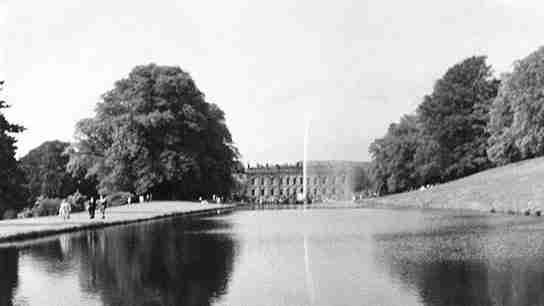AD Remembers: Deborah Duchess of Devonshire
Deborah Dowager Duchess of Devonshire, who died today at the age of 94, was more than just a devilishly witty British doyenne with a deep respect for chickens, a passion for Elvis Presley, and a supermodel granddaughter (that would be Stella Tennant). For decades, to the eternal thanks of English tourism, she and her late husband, the 11th duke, managed Chatsworth, a grand country house that they doggedly transformed into one of the ten most popular destinations in England. The 297-room Baroque behemoth in Derbyshire attracts more than 750,000 tourists annually, who tour its halls and gardens, gaze upon its masterpiece paintings, snap up private-label goods in its six themed shops, and dine in its four restaurants and cafés.

At the beginning, though, life was a bit more modest. The duchess was born the Honourable Deborah Vivien Freeman-Mitford, the youngest of the six irrepressible and often controversial daughters of the frequently cash-strapped 2nd Baron Redesdale. Two of her sisters, Diana and Unity, became passionate supporters of Adolf Hitler, while another, Nancy, became an admired novelist and biographer. Deborah, known as Debo, however, was considered somewhat dim, she once observed, so she proved to be far less of a trial to her long-suffering parents. While her elder siblings shocked England with their politics, love affairs, and sundry misbehaviors, Debo drifted happily into the social woodwork, marrying an heir to the dukedom of Devonshire in 1941. "I am a housewife," she once told The New York Times. "I am the wife of the house."
By that she meant Chatsworth, her home from 1959 until the death of her husband, Andrew, in 2004. (Their son Peregrine, known as Stoker, is the present duke.) When she and her husband moved into the neglected early-18th-century masterpiece, it was encumbered by staggering death duties, reportedly close to $20 million. Rare paintings, drawings, and books, as well as land and houses, were sold to bring down the debt—it would take 17 years to pay all the taxes—and moneymaking schemes percolated, not all of them successful. As the duchess wrote in a 2010 memoir, Wait for Me!, "Chatsworth Food, a company selling jams, chutneys, biscuits, and cakes, which were supposed to make Chatsworth’s fortune, was a dismal flop."
The ancestral art collection was raided to make ends meet over the years. Most famously, the family brought in $28.5 million via a 1984 sale of 70 old-master drawings, a headline deaccessioning that Christie’s specialist Francis Russell called "a bloodletting." Similar divestments followed, but in 2002 the Devonshires’ concerted labors—including the establishment of a charitable trust and endowment for the "long term preservation of Chatsworth for the benefit of the public"—finally resulted in an independently run historic property that pays for its own upkeep.
When the present duke, Stoker Devonshire, accepted World Monuments Fund’s Watch Award in 2012 for his stewardship of the 35,000-acre estate, he saluted his parents, saying, "Thanks to their energy, imagination, and a healthy dose of stubbornness over a tenure of 50 years, they turned a sad and decrepit old place into a destination which three quarters of a million people enjoy visiting every year."
For information about Chatsworth, go to chatswortrg . For *Architectural Digest’*s 2007 visit to the fabled country house, click here .